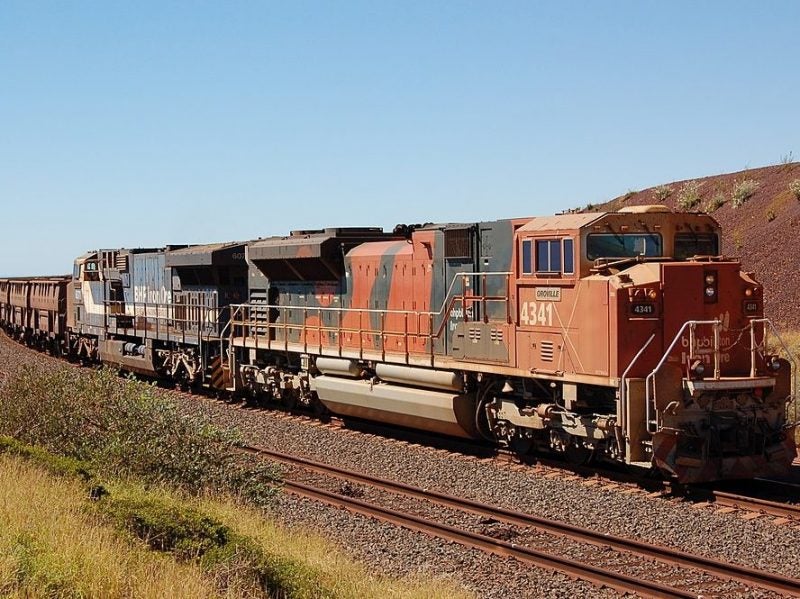
In documents seen by Guardian Australia, BHP’s archaeological survey identified rock shelters occupied more than 10,000 years ago, and noted that evidence in the broader area showed occupation of the surrounding landscape dated back approximately 40,000 years. BHP’s South Flank expansion puts 86 Aboriginal sites at risk of damage or destruction.
The revelations by the Guardian came following a huge backlash against Rio Tinto after its expansion in the Pilbara region destroyed a 46,000-year-old indigenous heritage site.

Discover B2B Marketing That Performs
Combine business intelligence and editorial excellence to reach engaged professionals across 36 leading media platforms.
Exploited legislation, exploited lands
Section 17 of the Aboriginal Heritage Act 1972 forbids damaging or destroying Aboriginal heritage sites. Section 18 provides a get out of jail card to flouting Section 17 – securing consent from the government under Section 18 essentially gives carte blanche to proceed as one pleases without fear of repercussions under the Act.
Following the Rio Tinto incident, Western Australia’s Minister for Indigenous Affairs Ben Wyatt said on Twitter it was “a terrible outcome” and “the result of out of date legislation that doesn’t acknowledge the value of heritage.”
Three days after Rio Tinto’s destruction of the Juukan Gorge heritage site, Wyatt approved BHP’s South Flank expansion.
Wyatt’s approval of the expansion has been widely condemned – the project puts up to 86 Aboriginal heritage sites at risk of destruction. But the traditional owners, the Banjima people, have no means to formally object to the approval and no means to prevent the sacred sites from being damaged.

US Tariffs are shifting - will you react or anticipate?
Don’t let policy changes catch you off guard. Stay proactive with real-time data and expert analysis.
By GlobalData“Despite the public outcry when Rio Tinto blew up Juukan Gorge three weeks ago, Ben Wyatt has continued to grant permits,” Birkbeck, University of London archaeologist and anthropologist Lawrence Owens said. “Indeed, in the three years that he has been in power, he has not refused to grant a single Section 18 application for a mining lease that was put before him.”
Section 18 approvals are irrevocable, and there are no allowances for new discoveries or developments. So the indigenous groups who hold these sites in such regard for their cultural and historical importance go unheard. There are, however, appeals processes if a mining company’s Section 18 application is rejected.
BHP reconsiders
BHP quickly pledged that it would not damage the heritage sites that it received ministerial permission to destroy without “further extensive consultation” with traditional owners, the Guardian reported. Previously, the traditional owners had been legally prevented from speaking out about the sites.
BHP has proposed several compromises, including recovering and storing artefacts at its Mulla Heritage Office. The company also offered to “digitally capture the extent and form of each stone arrangement” with a view to create three-dimensional computer models and videos of the sites. The Banjima people have not been willing to accept these proposals.
Owens explains: “BHP seem perplexed that their offer to relocate some sites or create electronic facsimiles of them away from the mining area have not been accepted by the Banjima, yet these sites are not comparable to Lascaux caves – which was reproduced elsewhere for visitors – or Abu Simbel, which was moved to a new site ahead of the Aswan Dam development. To remove these sites is to clip out nodes on a vast network of significant places, and thus make them meaningless; it is comparable to preserving a piece of clothing by cutting out the patterns and leaving the rest.”
Industry collides with history
Rio Tinto executives are holding meetings this week after being called in to explain the company’s destruction of Juukan Gorge to major shareholders. The widespread backlash to that incident prompted renewed discussions of the legislative protections of Aboriginal sites and the rights of Australia’s indigenous population.
Australasian Centre for Corporate Responsibility executive officer Brynn O’Brien told the Guardian that Rio Tinto executives had been “surprised” by the backlash against the company, because it had acted in accordance with Western Australian laws and longstanding industry practice. According to O’Brien, investors had been concerned about BHP’s track record with Aboriginal heritage even before news broke that it had received permission to expand South Flank.
“Industries are designed to make money, at whatever cost. Cultural heritage is not in their remit,” said Owens. “So political restrictions exist to ensure they do not get too powerful, thus social welfare and cultural heritage do not suffer. Yet it is clear that in the WA case, the impotence of the laws issued by the latter have favoured the former to a ludicrous degree.”
Wyatt has consistently provided the defence that updated Aboriginal protections that do away with Section 18 entirely are on their way. With Juukan Gorge, and now BHP’s expansion plans that risk 86 heritage sites, one might hypothesise that mining companies, in conjunction with WA’s mining-friendly government, are fast-forwarding these processes before the door closes entirely.
Owens continued: “There is little about human history that cannot be recovered from archaeological research, but if you destroy something, that’s it. There is no way back. In a thousand years from now – which is a blink of time for the Aboriginal story – the descendants of modern Aboriginals will be able to show their children a massive hole in the ground where their heritage used to be. And all the iron dug out at such great cost will be rust.
“There simply has to be a way to balance the cost of the future with the value of the past.”





